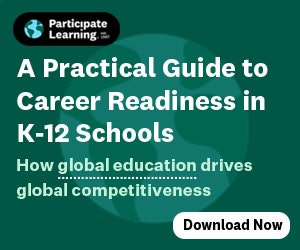
Innovation is too often inequitable
Agarwal envisions AI as being a co-pilot for educators, handling repetitive tasks like grading and tailoring lesson plans while freeing teachers to focus on the creative, relational aspects of teaching. He draws parallels to technologies like calculators, which once sparked fears of obsolescence but ultimately empowered users to solve problems more efficiently. AI tools like Khanmigo from Khan Academy and AI-powered assistants on platforms like edX are already showing the potential to enhance classroom experiences in a similar way.
However, as Justin Reich argues in Failure to Disrupt: Why Technology Alone Can’t Transform Education, the integration of education technology into schools often fails to live up to expectations. Technologies like smartboards and MOOCs once promised revolutionary change but were often underutilized or failed to address systemic inequities. I remember hearing these promises as a classroom teacher. Reich describes the “Matthew Effect,” where such innovations disproportionately benefit affluent, resource-rich communities, exacerbating the very inequalities they claim to address. Administrators must be vigilant to ensure AI tools don’t follow this pattern.
Ensuring equity and inclusivity
Dr. Shuchi Grover’s research emphasizes the need for equity, inclusivity, and teacher-centered design in AI implementation, and provides a roadmap for addressing these challenges. In her paper “Teaching AI to K-12 Learners: Lessons, Issues, and Guidance,” Grover highlights the importance of grounding AI integration in equity and inclusivity. She argues that AI tools must be designed to reflect the diverse needs and cultural backgrounds of students, ensuring that marginalized learners are not left behind.
Grover’s recommendations include:
- Demystifying AI: Teachers and students must understand AI’s capabilities and limitations to use it effectively. This requires professional development that dispels myths and equips educators to evaluate AI tools critically.
- Culturally responsive design: AI tools should align with the cultural and linguistic diversity of classrooms, using methods like project-based learning to engage students in meaningful, relevant ways.
- Embedding ethical discussions: As AI increasingly shapes students’ lives, curricula must include lessons on its societal implications, preparing learners to navigate an AI-driven world with a critical, informed perspective.
These principles can guide administrators to prioritize tools that foster inclusivity and empower all students, not just benefit those with the most resources.
Steps to successful implementation
To translate AI’s promise into meaningful outcomes, administrators must approach its implementation thoughtfully. The following strategies, informed by Agarwal, Reich, and Grover, can help schools integrate AI effectively:
1. Empower educators through professional development
Agarwal envisions AI as a tool to elevate teachers into "superteachers." However, this transformation requires investment in teacher training. Professional development should:
- Equip educators with technical skills to use AI tools confidently.
- Foster understanding of AI’s ethical and practical implications.
- Provide strategies for integrating AI into existing curricula without disrupting established workflows.
2. Use pilot programs
Reich advocates for a tinkerer’s mindset, encouraging schools to experiment with AI on a small scale before committing to widespread adoption. Pilot programs allow administrators to gather data, refine tools, and address challenges in real time. For instance, AI platforms like Desmos have succeeded by enhancing teacher-student collaboration through iterative design.
3. Prioritize equity
AI integration must be guided by equity. Administrators should:
- Ensure that all students have access to the devices, internet, and support needed to use AI tools effectively.
- Select tools designed with inclusivity in mind, addressing the specific needs of underserved populations.
- Monitor outcomes to ensure that AI narrows, rather than widens, achievement gaps.
Empowerment, experimentation, and equity
Agarwal presents an inspiring vision of AI’s potential to transform education. However, as Reich and Grover remind us, the road to meaningful change is complex and requires careful planning. Administrators have the power to shape AI integration in ways that enhance learning for all students while avoiding the disappointments of past technologies.
By focusing on teacher empowerment, iterative experimentation, and equity, administrators can ensure that AI serves as a tool for progress rather than perpetuating existing inequities. AI’s true promise lies not in replacing teachers but in amplifying their ability to connect, inspire, and educate.
The future of education is not just about adopting new technologies; it’s about using them thoughtfully to build a more inclusive, effective, and human-centered system of learning. Let’s embrace this moment with a commitment to equity and a willingness to adapt.
Jason McKenna is V.P. of Global Educational Strategy for VEX Robotics and author of “What STEM Can Do for Your Classroom: Improving Student Problem Solving, Collaboration, and Engagement, Grade K-6.” His work specializes in curriculum development, global educational strategy, and engaging with educators and policymakers worldwide. For more of his insights, subscribe to his newsletter.




























